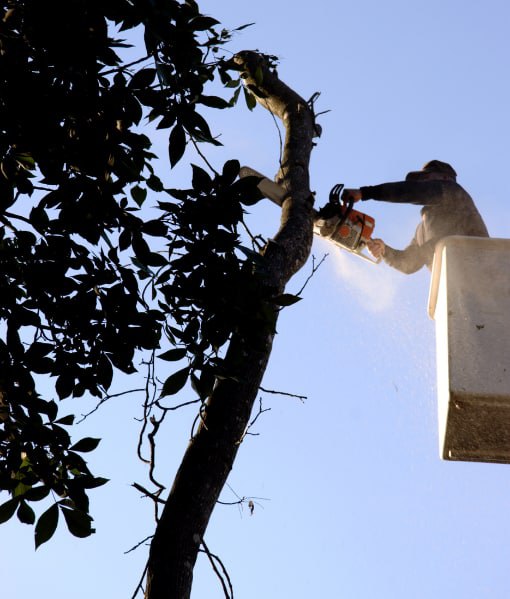
Introduction: Strong winds can significantly threaten trees, especially during storms or in regions prone to high winds. Wind damage can result in broken branches, uprooted trees, and even safety hazards. However, with proper pruning techniques, you can help your trees withstand the forces of nature and minimise the risk of wind damage. In this blog post, we’ll explore effective strategies for pruning trees to enhance their wind resistance.
Understanding Wind Damage:
Before diving into pruning techniques, it’s essential to understand how wind can impact trees:
- Wind Sail Effect: Trees act as natural windbreaks, but their canopies can also act like sails, catching the wind and exerting force on the trunk and branches.
- Top-Heavy Growth: Overly dense or top-heavy canopies are more susceptible to wind damage, as they offer a larger surface area for the wind to push against.
- Branch Structure: Trees with weak or poorly attached branches are at higher risk of limb breakage during strong winds.
Pruning Strategies for Wind Resistance:
- Crown Thinning: Thinning the crown by selectively removing some branches can reduce wind resistance. Focus on removing crowded or crossing branches and those with narrow crotch angles.
- Crown Reduction: Reducing the height and spread of the tree’s canopy can make it more wind-resistant. However, this should be done gradually and carefully to maintain the tree’s health.
- Canopy Balancing: Prune to create a well-balanced canopy by removing excessive growth from one side of the tree. This helps distribute wind forces more evenly.
- Deadwood Removal: Dead or weak branches are more likely to break during a storm. Regularly removing deadwood minimises the risk of wind damage.
- Selective Pruning: Target branches most vulnerable to wind damage, such as those with included bark, tight crotch angles, or signs of decay. Removing these branches can improve overall tree stability.
- Topping Prevention: Avoid topping or excessive crown reduction, as it can lead to weak regrowth and reduced wind resistance. Instead, focus on thinning and shaping the canopy.
When to Prune for Wind Resistance:
Timing is crucial when pruning for wind resistance:
- Dormant Season: Pruning during the dormant season (late fall to early spring) is generally best, as it reduces the risk of disease transmission and minimises stress on the tree.
- After Storms: Immediately after a storm, inspect your trees for damage and promptly remove any broken or damaged branches to prevent further problems.
Consulting a Professional:
Pruning for wind resistance is both an art and a science, and it’s often best to consult with a certified arborist or tree surgeon, especially for large or mature trees. These experts have the knowledge and experience to assess your trees and apply the most effective pruning techniques to enhance their wind resistance while maintaining their overall health.
Conclusion: Pruning trees to minimise wind damage is a proactive approach to safeguarding your trees and property during storms. By adopting proper pruning strategies and timing, you can help your trees withstand the forces of nature, ensuring their longevity and the safety of your surroundings.
Call us on: 01892 352895
Click here to find out more about PW Tree Surgeons
Click here to complete our contact form and see how we can help with your tree’s needs.